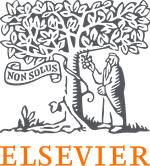Public space, place and landscape: proximities and distances for an urban anthropology
Keywords:
paisaje, espacio público, antropología urbana. landscape, public space, urban anthropology.Abstract
The text presents some precisions about the concepts of space, place and landscape. When these concepts are given in urban planning, urban design, architecture or ethnography, it is possible to find significant distances from the city versus urban. Also, the tour of these notions, could evidence certain proximities that allude to which lens is observed one of the key objects for studying the territory: the public space. This, in turn, explains the different positions of social actors in it: the decision maker, planner, designer or architect, and -moreover- the passer or the ordinary user. The recurrent use of the term "landscape" to talk about the open spaces of our cities implies a review of the term, since its heyday at the study of everyday life until its appearance at the emergent Landscape Urbanism. Finally, focusing on Latin American cases, in this text are addressed the possibilities and challenges of undertaking a research framed in sociocultural studies and from urban anthropology in a city at the northwestern border of Mexico.
Downloads
References
Aguilar Díaz, Miguel Ángel (2012), "Antropología urbana y lugar: Recorridos conceptuales", en
Giglia, A. y Signorelli, A. (eds.), Nuevas topografías de la cultura. México: Universidad
Autónoma Metropolitana, Juan Pablos Editor, pp. 113-144.
Augé, Marc (2007), Por una antropología de la movilidad.Barcelona: Gedisa.
Barker, Chris (2003), Cultural Studies: Theory and Practice. Londres: SAGE Publications
Limited.
Certeau, Michel de (2000), La invención de lo cotidiano: artes de hacer. México: Universidad
Iberoamericana.
Claval, Paul (2007), Ageografia cultural. (L. F. Pimenta & M. de C. A. Pimenta, trads.) (3a ed.).
Florianópolis: Editora da UFSC.
Corner, James (2005), "Terra Fluxus", en Waldheim, Ch. (ed.), The Landscape Urbanism Reader.
Nueva York: Princeton Architectural Press, pp. 21-33.
Delgado, Manuel (1999), El animal público: hacia una antropología de los espacios urbanos.
Barcelona: Anagrama.
Delgado, Manuel (2007), Sociedades movedizas: pasos hacia una antropología de las calles.
Barcelona: Anagrama.
Doucet, Isabelle y Janssens, Nel (2011), "Transdisciplinarity, the Hybridisation of Knowledge
Production and Space-Related Research", en Transdisciplinary Knowledge Production in
Architecture and Urbanism. New York: Springer, pp. 1-14.
García Canclini, Néstor (1997), "Culturas urbanas de fin de siglo: la mirada antropológica",
International Science Journal, Nº 153.
Giménez, Gilberto (2003), "La investigación cultural en México. Una aproximación", en Los
estudios culturales en México. México: Fondo de Cultura Económica, pp. 56-79.
Gorelik, Adrián (2002), "Imaginarios urbanos e imaginación urbana: para un recorrido por los
lugares comunes de los estudios culturales urbanos", EURE,Vol. 28, Nº 83, pp. 125-136.
Gorelik, Adrián (2008), "El romance del espacio público",Alteridades,Vol.18, Nº 36, pp. 33-45.
contexto
Groth, Paul (1997), "Frameworks for Cultural Landscape Study", en Groth, P. (ed.), Understanding
Ordinary Landscapes. New Haven: Yale University Press, pp. 1-24.
Guber, Rosana (2011), La etnografía: método, campo y reflexividad.Buenos Aires: Siglo XXI.
Jackson, John Brinckerhoff (1994), Asense of place, a sense of time. New Haven: Yale University
Press.
Jameson, Fredric (1998), " Sobre los 'Estudios Culturales'," en Estudios Culturales:reflexiones sobre
el multiculturalismo. Barcelona: Paidós, pp. 69-136.
Jameson, Fredric (2003), "La ciudad futura", New Left Review, Nº 21, pp. 91-106.
Lefebvre, Henri (1971), De lo rural a lo urbano. Barcelona: Península.
Lefebvre, Henri (1976), El derecho a la ciudad.Barcelona: Península.
López Levi, Liliana, & Ramírez Velázquez, Blanca Rebeca (2012), "Pensar el espacio: región,
paisaje, territorio y lugar en las ciencias sociales", en Reyes Ramos, M.
E. y López Lara, Á. F. (eds.), Explorando territorios: una visión desde las ciencias sociales.
México: Universidad Autónoma Metropolitana. pp. 21-48
Monsiváis, Carlos (2003), "De cómo vinieron los Estudios Culturales y a lo mejor se quedan",
Revista Iberoamericana, Vol. 69, Nº 203, pp. 417-424.
Montaner, Josep Maria (1997), La modernidad superada: arquitectura, arte y pensamiento del siglo
XX. Barcelona: Gustavo Gili.
Norberg-Schulz, Christian (1980), Genius loci. Nueva York: Rizzoli.
Reguillo, Rossana (2005), "Ciudad, riesgos y malestares. Hacia una antropología del
acontecimiento", en García Canclini, N. (coord.), La antropología urbana en México.
México: Consejo Nacional para la Cultura y las Artes, Universidad Autónoma
Metropolitana, Fondo de Cultura Económica, pp. 307-340.
Richard, Nelly (2005), "Globalización académica, estudios culturales y crítica latinoamericana", en
Mato, D. (ed.), Cultura, política y sociedad. Perspectivas latinoamericanas.Buenos Aires,
CLACSO, pp. 185-199.
Smart Growth Network (2006), Así es el desarrollo inteligente.Bayamón, USA: Smarth Growth
Network-Universidad Metropolitana.
Tuan, Yi-Fu (1977), Space and Place: The Perspective of Experience. Minneapolis: University of
Minnesota Press.
Waldheim, Charles (2006), "AReference Manifesto", en Waldheim Ch. (ed.), The Landscape
Urbanism Reader. Nueva York: Princeton Architectural Press, pp. 13-19
Yúdice, George (2002), "Contrapunteo estadounidense/latinoamericano de los estudios culturales",
en Mato, D. (ed.), Estudios y otras prácticas intelectuales latinoamericanas en cultura y
poder. Caracas: CLACSO, pp. 339-352.
Zukin, Sharon (1993), Landscapes of Power: from Detroit to Disney World.Berkeley: University of
California Press.
Downloads
Published
How to Cite
Issue
Section
License
Copyright (c) 2017 CONTEXTO. Revista de la Facultad de Arquitectura de la Universidad Autónoma de Nuevo León

This work is licensed under a Creative Commons Attribution-NonCommercial 4.0 International License.
The authors who publish in this journal accept the following conditions:
1. The authors keep the copyright and give the journal the right of the first publication, with their content registered under the Creative Commons License, which lets third parties to use the published material as long as they mention the authors and the first publication from the journal.
2. The authors can make other independent and additional contractual agreements for the non-exclusive distribution of the version of the article published in the journal (for example an institutional repository or a book) provided that they explicitly mention that the content was first published in CONTEXTO. Revista de la Facultad de Arquitectura de la Universidad Autónoma de Nuevo León..










.png)





